





When it comes to influencer marketing software, PrimeTag has gained visibility for its campaign tracking and analytics, but many marketers are voicing concerns. The most common drawbacks shared on review sites and forums include limited integrations with eCommerce platforms like Shopify, a lack of automation for outreach and reporting, and pricing that feels steep compared to its feature set. These gaps are pushing D2C brands and agencies to explore alternatives.
In this article, we’ll break down the top 10 alternatives to PrimeTag to help you decide which platform aligns best with your marketing goals:
Let’s discover three reasons why some users might be seeking PrimeTag alternatives:
PrimeTag currently has only two reviews listed on G2, which is not enough to provide reliable buying insights for prospective customers. In fact, G2 highlights that there isn’t sufficient user feedback to generate meaningful benchmarks.
Another major drawback is that PrimeTag does not make its pricing publicly available. On its G2 profile, pricing details are marked as “not currently available,” meaning brands must contact sales directly to get a quote. This lack of transparency complicates cost comparisons against competitors that are upfront about pricing.
PrimeTag claims to cover more than 50 markets and has processed over 3 billion pieces of creator content through its Universe platform. While this shows ambition, some D2C brands worry about whether its localization, integrations, and support in non-core markets are robust enough.
Our comparison focuses on several key aspects:
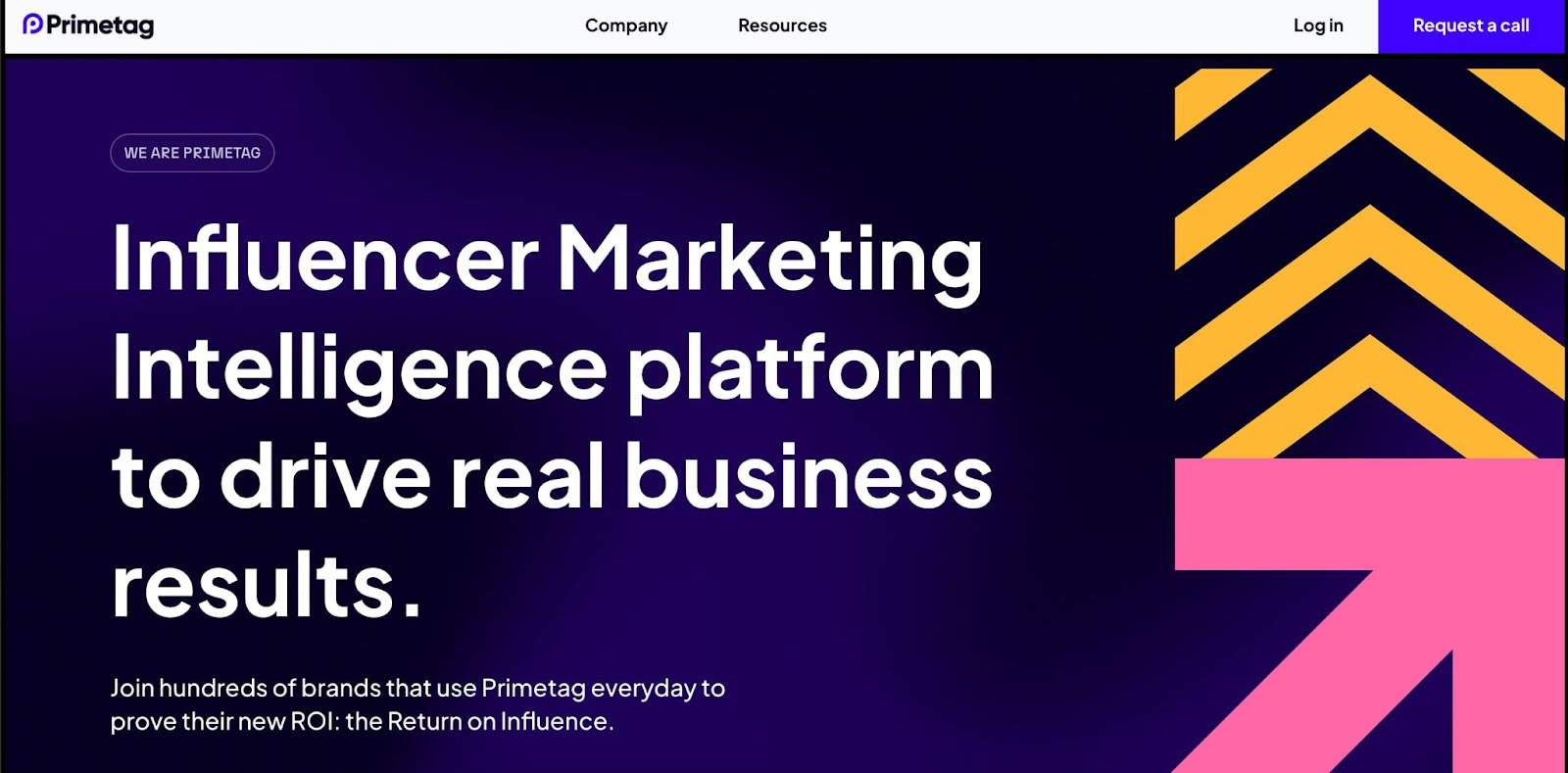
Platform Coverage: Instagram, TikTok, YouTube, Facebook, Pinterest, and LinkedIn.
Best For: Primetag is ideal for mid-to-large eCommerce brands and agencies aiming to scale influencer campaigns with a focus on measurable ROI, particularly those with omnichannel sales strategies.
Pricing: Undisclosed.
Reviews: 4.8 / 5.0 (G2, based only on 2 reviews)
Ease of Use (UX/UI): Users appreciate Primetag's intuitive interface, which simplifies complex influencer marketing tasks. The platform's design facilitates efficient campaign management and data analysis, enhancing user experience.
Customer Support: Primetag is noted for its responsive customer support, offering assistance through various channels to ensure users can effectively utilize the platform's features.

Platform Coverage: Instagram, TikTok, YouTube, Facebook, Pinterest, Snapchat, X, Twitch
Best For: eCommerce and D2C brands looking for an all-in-one solution to scale influencer and affiliate programs with automation, real-time insights, and deep multi-platform coverage. It’s especially valuable for teams aiming to maximize ROI while managing large-scale creator campaigns efficiently.
Pricing: (Plans are monthly and scalable.)
Reviews: 5.0 / 5.0 (Capterra)
Ease of Use (UX/UI): Influencer Hero is designed with simplicity and speed in mind. Its intuitive dashboard, drag-and-drop campaign setup, and visual workflows make it easy to use, even for non-technical teams. Automated email templates, bulk outreach workflows, and a Chrome extension save hours weekly, while clean dashboards provide clarity at every step.
Customer Support: Customer support is one of Influencer Hero’s strongest differentiators. Every plan includes a dedicated account manager from day one, ensuring brands always have a real partner for success. The platform delivers 24/7 real-human live chat, fast-response email support, and an in-depth Help Center packed with written and video tutorials.
While PrimeTag positions itself as a measurement and analytics-first tool, excelling at ROI attribution, it lacks strong CRM, gifting, and affiliate program management. Influencer Hero, on the other hand, offers an all-in-one solution, combining influencer discovery, automated outreach, CRM, UGC collection, storefronts, and real-time ROI tracking, making it more versatile for eCommerce-driven brands.
Pricing also distinguishes the two platforms. While PrimeTag does not disclose its pricing publicly, Influencer Hero offers transparent and flexible plans starting at $649/month, with every tier including premium support and the ability to scale seamlessly. For brands seeking both intelligence and execution, Influencer Hero delivers far greater value.
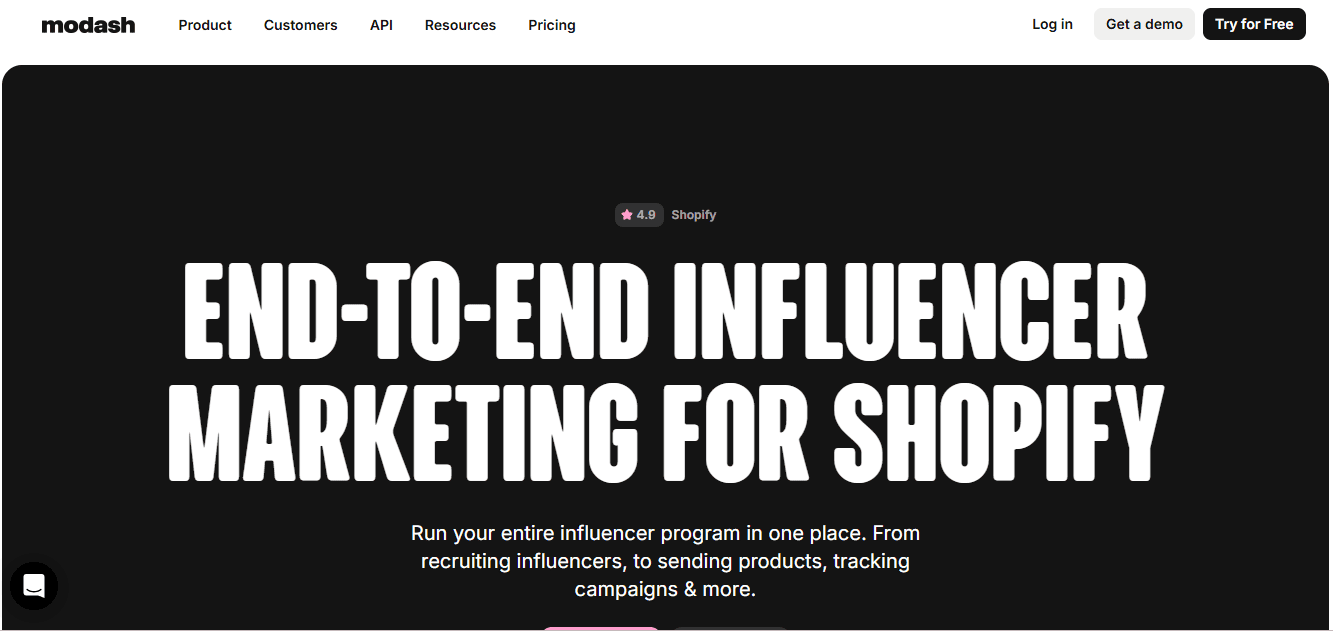
Platform Coverage: Instagram, TikTok, YouTube, and profile recognition for X, Snapchat, and other platforms.
Best For: Consumer brands and in-house marketing teams that want a data-driven, end-to-end influencer tool focused especially on discovery, analytics, and campaign tracking. It works well for brands scaling influencer programs who want a reliable, scalable workflow without needing a huge agency.
Pricing: Modash offers free trials to both their Essentials and Performance plan.
Reviews: 4.9 / 5.0(Capterra.com)
Ease of Use (UX/UI): Users often praise Modash for having a clean, well-organized interface that makes it relatively intuitive to filter, compare, and vet creators. Some say the learning curve is mild to moderate once you move beyond basic discovery to workflow automations.
Customer Support: Support feedback is mixed but generally positive: many users mention prompt responses from the Modash team and solid documentation. Some users say advanced support features (or customization) require contacting sales or higher-tier plans.
PrimeTag is more attribution- and analytics-centric, focusing heavily on measuring campaign impact (including offline attribution) and deep data integrations. Modash, by contrast, emphasizes discovery, workflow automation, and influencer management with a strong eCommerce tie-in (especially for product seeding and Shopify stores).
However, for brands wanting a consolidated tool to manage influencer recruitment, content tracking, communications, and payments with fewer external tools, Modash presents a more unified workflow. In terms of pricing, Modash offers more transparent tiers starting at $299/month (or reduced with annual billing) for Essentials and $599/month for Performance.
PrimeTag’s pricing often becomes higher especially once you enable more advanced attribution modules. Thus, for mid-size or growing brands that value ease of management and eCommerce alignment, Modash can deliver more “all-in-one” utility per dollar, while PrimeTag is better suited for use cases where advanced measurement is paramount.

Platform Coverage: Instagram, TikTok, YouTube, X , Twitch, Pinterest, WordPress blogs.
Best For: eCommerce, D2C, and growth brands that want a unified system for discovering influencers, managing campaigns, measuring affiliate sales, and automating workflows across platforms.
Pricing: Upfluence offers annual contracts with the following pricing.
Reviews: 4.6 / 5.0 (G2)
Ease of Use (UX/UI): Many users comment that Upfluence’s interface is clean, well organized, and helps simplify complex campaign tasks. Some users note, however, that beginners may initially find the number of features and modules a bit overwhelming.
Customer Support: Reviewers often praise Upfluence’s support team and customer success managers for responsiveness and hands-on help.
Where PrimeTag emphasizes deep attribution, cross-channel measurement (including offline channels), and analytics-first capabilities, Upfluence leans more heavily into execution. PrimeTag is a stronger pick if your top priority is measuring multi-touch attribution and validating impact across broader marketing stacks.
Conversely, Upfluence provides a more turnkey, all-in-one solution: from sourcing influencers to managing briefs and paying them, to directly tracking the sales they drive. In terms of pricing, Upfluence tends to require higher minimums and often mandates annual contracts, which can deter smaller teams or those wanting more flexibility. Thus, brands that want a hands-on, integrated influencer toolkit may lean toward Upfluence, while those that are more measurement- and attribution-focused may find more value in PrimeTag’s analytics-first orientation.
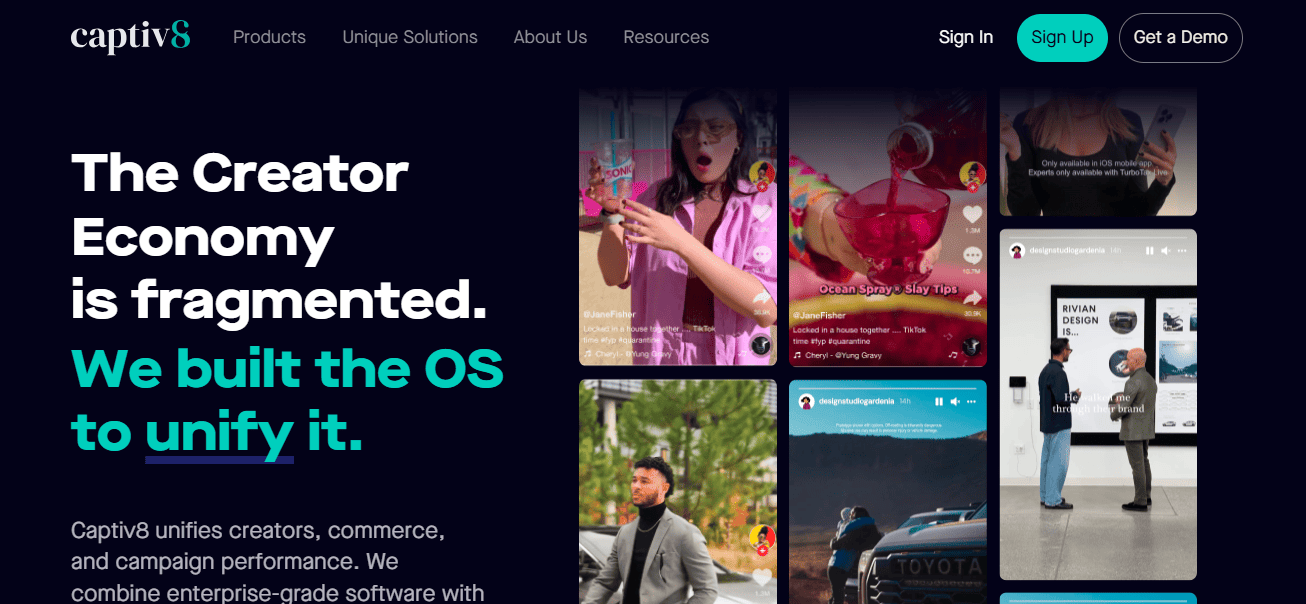
Platform Coverage: Captiv8 supports influencer campaigns across Instagram, YouTube, TikTok, Facebook, Twitter, and Pinterest.
Best For: Enterprise brands, large agencies, and teams running high-volume influencer and content campaigns who need an AI-driven, full-funnel platform for creator-driven commerce and analytics.
Pricing:
No monthly or customizable plans are available; pricing is rigid and enterprise-focused
Reviews: 4.6 / 5.0 (G2)
Ease of Use (UX/UI): Users generally appreciate Captiv8’s polished, modern interface and intuitive dashboards for things like influencer discovery and campaign monitoring. Some note there is a moderate learning curve when adopting deeper analytics, workflow automation, or social listening modules.
Customer Support: Many reviewers highlight responsive support and a strong onboarding experience, especially for enterprise clients. On the flip side, some users mention that for very customized or advanced feature requests, support can require escalation or is tied to higher-tier contracts.
Explore our top 10 Captiv8 alternatives to compare pricing, features, and reviews for more effective influencer marketing.
PrimeTag prioritizes precise attribution, cross-channel measurement (including offline impact), and measurement-centric workflows. It’s designed for brands that want to deeply link influencer campaigns into their broader marketing and attribution stacks. Captiv8, by contrast, leans into content and creative execution, offering AI-powered discovery, social listening, campaign workflows, and commerce integrations bundled in a unified platform.
Price and contract structure also distinguish them.
Captiv8’s pricing is custom and directed toward enterprise clients, often starting near $2,000/month and requiring multi-month commitments. Meanwhile, PrimeTag offers modular pricing for its attribution and analytics services, which may scale more flexibly for clients primarily focused on measurement.
In short: choose Captiv8 when you want a creative + campaign execution engine with rich analytics baked in; choose PrimeTag when your top need is deep, custom attribution and measurement across influencer channels.

Platform Coverage: Instagram, TikTok, YouTube, Facebook, Pinterest, Twitch, X.
Best For: CreatorIQ is built for large brands, enterprise teams, and agencies that require robust, scalable influencer marketing infrastructure, deep analytics, and unified workflows across creators and content channels.
Pricing:
Reviews: 4.6 / 5.0 (G2)
Ease of Use (UX/UI): Users often say the UI is polished, modern, and visually organized, which helps navigate complex data and campaign elements. However, some note that the volume of features, heavy dashboards, and layered menus can feel somewhat clunky or require many clicks to access deeper tools, especially for new users.
Customer Support: Many reviewers highlight that CreatorIQ’s customer success teams are responsive, knowledgeable, and proactive in resolving issues. At the same time, some users say that support for highly customized requests or niche use cases sometimes requires escalation or only comes with higher-tier agreements.
PrimeTag’s strength lies in measurement, attribution, and cross-channel analytics, particularly for brands that want to deeply link influencer campaigns to broader marketing ROI. Whereas CreatorIQ is more of a full-stack influencer marketing operating system, encompassing discovery, execution, campaign management, payments, and analytics in a unified environment.
In pricing structure, CreatorIQ is aimed at enterprise budgets: it usually starts in the multi-thousand-dollar per month range (with annual commitments) and custom feature bundling. PrimeTag, in contrast, can scale more modularly, especially for clients whose primary need is measurement and attribution rather than full creative execution.
Brands should choose CreatorIQ if they want an all-in one, premium influencer engine that handles everything from sourcing to payment, while PrimeTag may be a better fit if your priority is logic, attribution, and analytics above full campaign orchestration.
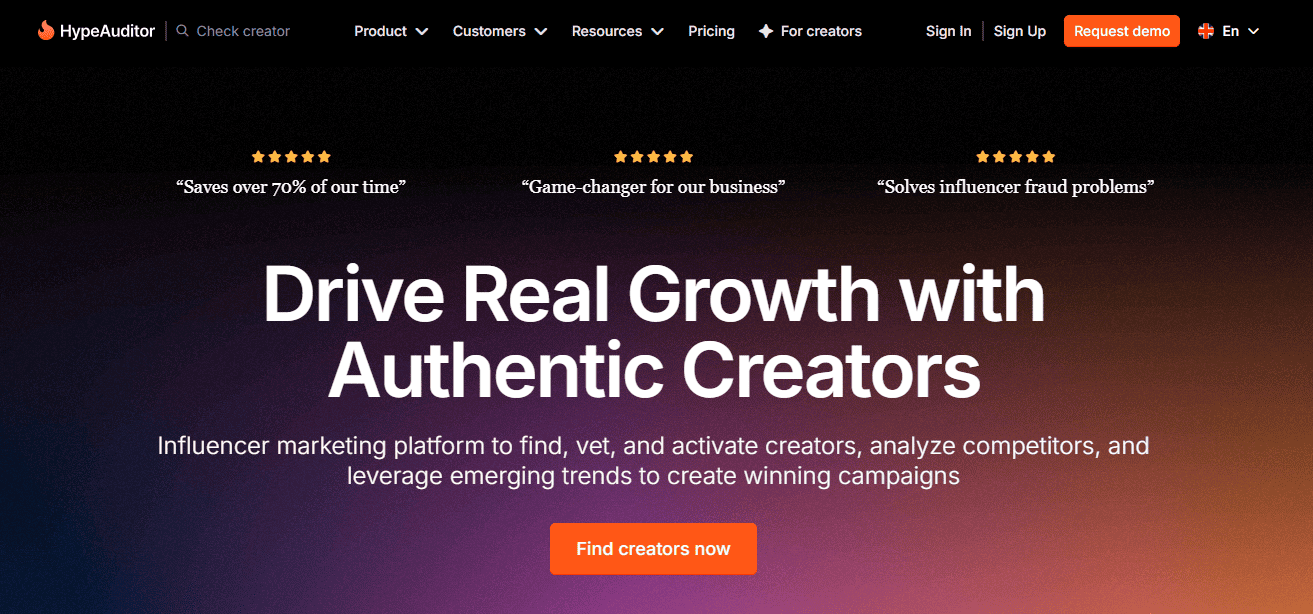
Platform Coverage: Instagram, TikTok, YouTube, Twitch, X (Twitter), Snapchat
Best For: Brands, agencies, and marketers who want to emphasize transparency, audience quality, and fraud detection in their influencer programs, especially those doing mid to large-scale campaigns.
Pricing: Custom plans based on usage. Flexible contract terms depending on platform access, campaign volume, and number of reports.
Reviews: 4.5 / 5.0 (G2)
Ease of Use (UX/UI): Many users say that HypeAuditor is intuitive and well-designed, with dashboards and filters that make it easier to browse influencer profiles and campaign data. However, some users mention a learning curve when trying to use more advanced analytics, reports, or layered features.
Customer Support: Users generally report that HypeAuditor support is responsive and helpful, especially for standard questions or setup assistance. Yet, others complain that deeper or custom requests sometimes receive slower or inconsistent responses.
PrimeTag is primarily attribution- and analytics-focused, built to integrate influencer campaigns within broader marketing measurement and cross-channel ROI frameworks. HypeAuditor, on the other hand, is more oriented toward influencer vetting, discovery, fraud prevention, and campaign-level insights.
On pricing, HypeAuditor begins around $399/month for its Essentials tier (per user) for basic features and requires custom quotes for many advanced modules. In short: if your top priority is ensuring influencer authenticity, spotting fraud, and getting reliable campaign reports, HypeAuditor is a solid pick. But if your priority is tying influencer output into a larger attribution stack or multi-channel measurement, PrimeTag may provide stronger value in the long run.
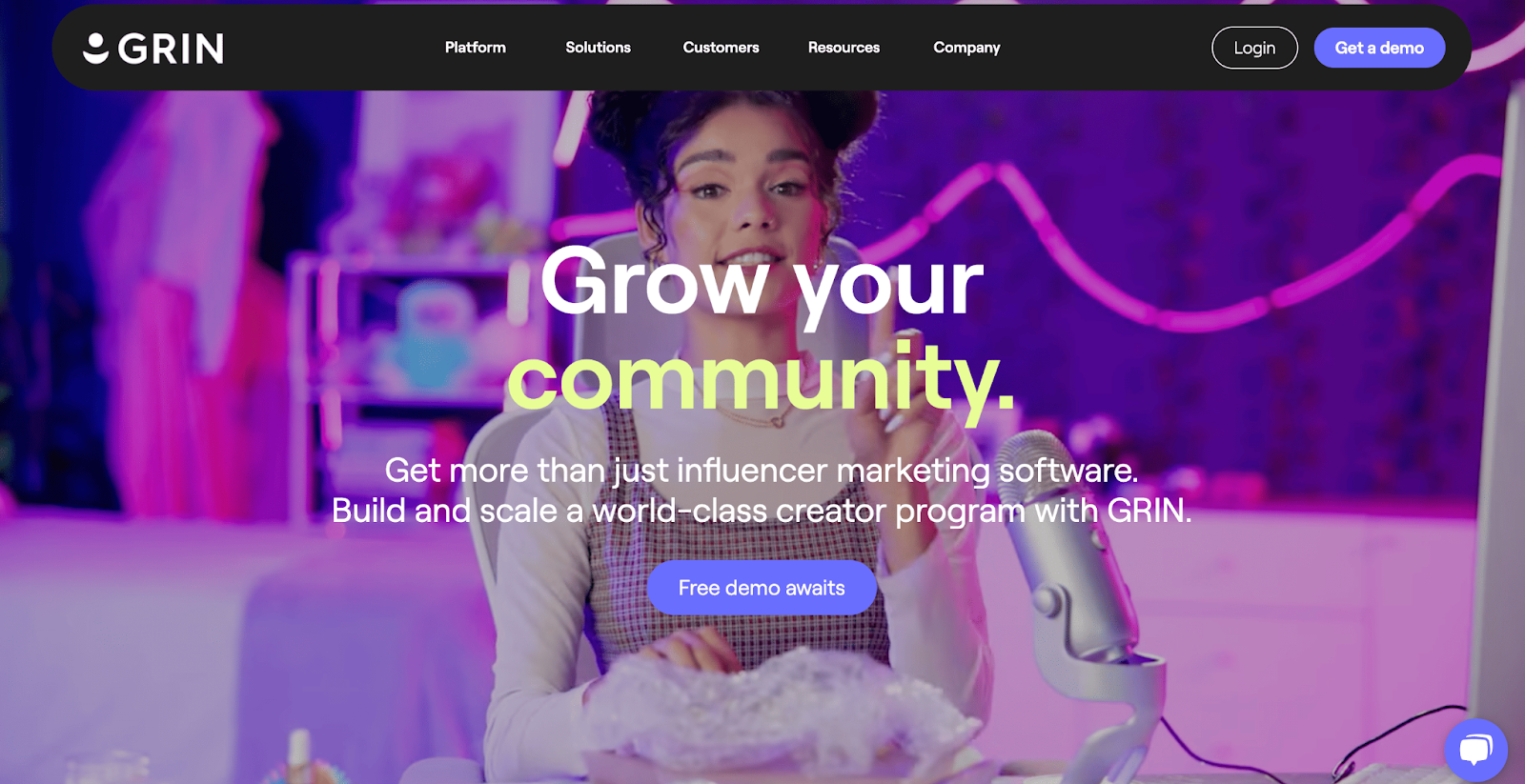
Platform Coverage: Instagram, TikTok, YouTube, X, Twitch, Snapchat
Best For: Medium-to-large eCommerce and D2C brands that want a full creator marketing engine to manage influencer and affiliate programs end-to-end, especially those already running a program and looking to scale.
Pricing: Plans start at $25,000 per year, with monthly payments available and a required 12-month commitment; typical monthly costs range from $2,500 to over $10,000 depending on usage, though pricing transparency may vary based on selected features.
Reviews: 4.5 / 5.0 (G2)
Ease of Use (UX/UI): Many users praise Grin’s interface as clean, organized, and helpful in centralizing workflows for creators, campaigns, and content. However, others mention that navigating its depth of features can feel overwhelming initially, and some parts of the UI take time to master
Customer Support: Users often commend Grin’s support and onboarding, noting the team is responsive, friendly, and helpful in resolving issues. Still, a number of users report slower response times or delays, especially for more complex or custom requests.
Check out our guide on the top 10 GRIN alternatives to find platforms that can elevate your influencer marketing strategy.
PrimeTag is more measurement- and attribution-centric, built to deeply integrate influencer campaigns within a brand’s overall marketing analytics stack. Its strength lies in cross-channel attribution modeling, linking influencer actions to downstream conversions, and customized reporting depth. Grin, by contrast, presents itself as a robust creator marketing engine, focusing on execution and operator workflows, while still providing attribution capabilities.
In pricing and commitment, Grin typically demands a higher entry point and annual contracts, with custom quotes reflecting scale and feature needs.
PrimeTag, conversely, can be structured more modularly, clients whose main need is analytics and measurement may find PrimeTag more cost-efficient and flexible. For brands that want a unified influencer execution hub, Grin is compelling; for those prioritizing measurement and integration into existing analytics architectures, PrimeTag may ultimately deliver better ROI per dollar.
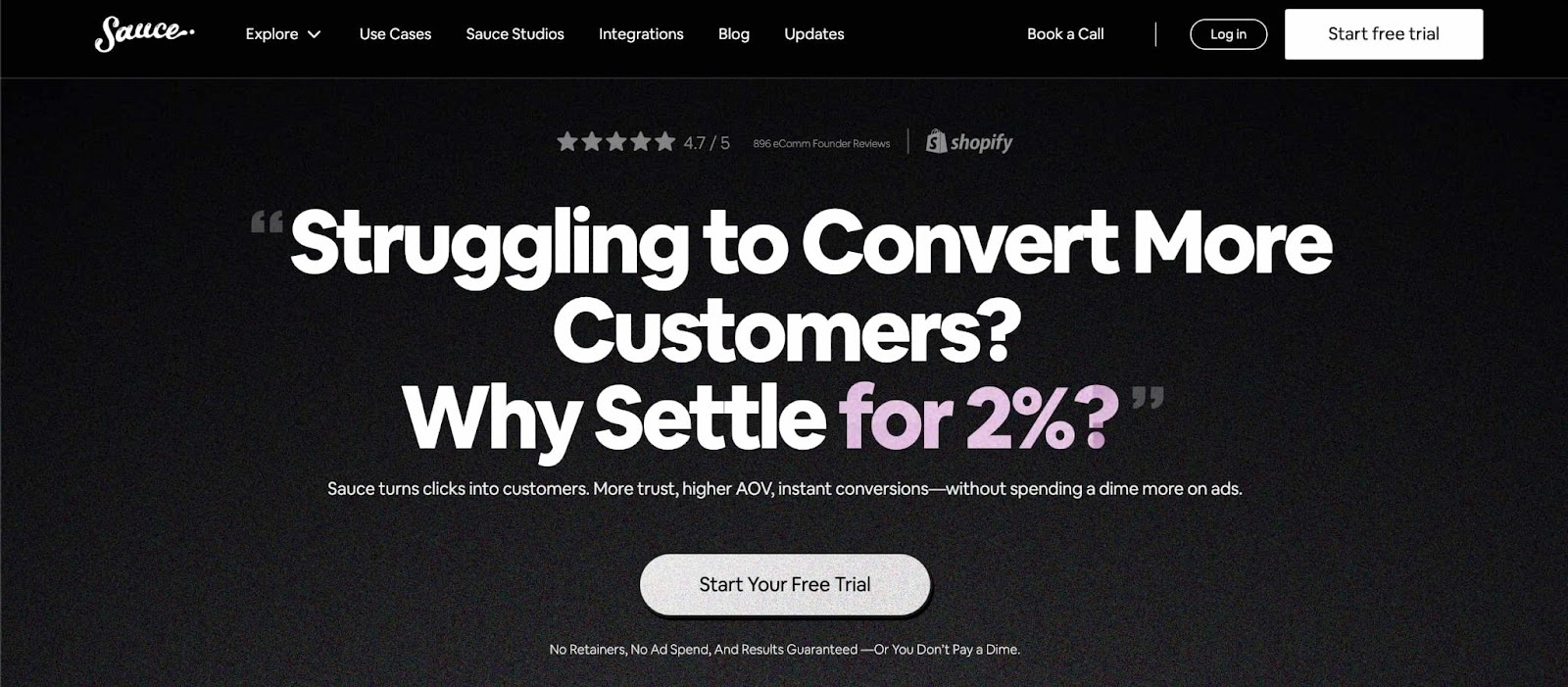
Platform Coverage: Integrates with Instagram and TikTok
Best For: eCommerce and D2C brands that want to convert social media content into shoppable experiences on their sites, leveraging visual commerce and social proof. It’s especially useful for brands aiming to integrate influencer/UGC content across their storefronts and email channels.
Pricing:
Free 7-day trial available on all plans.
Reviews: 4.6 / 5.0 (Shopify App Store)
Ease of Use (UX/UI): Users often report that AddSauce is intuitive and easy to set up, with a clean interface, drag-and-drop galleries, and embedded visual shopping tools. That said, some users say that as usage grows, managing performance limits and impressions can become more complex.
Customer Support: Many merchants praise AddSauce’s support as responsive, collaborative, and willing to customize behaviors or help with theme integration. However, there are some reports of billing disputes or surprises when usage limits are exceeded or when the app automatically scales.
PrimeTag is designed as a measurement- and attribution-first platform. Its core advantage lies in giving brands deep, multi-touch analytics, cross-channel influence attribution, and integrating influencer data into the broader marketing stack. In contrast, AddSauce leans heavily into social commerce and visual shopping, focusing more on surfacing user-generated and influencer content as directly shoppable elements on a brand’s site or email.
In terms of pricing and positioning, AddSauce has more accessible entry points and scales via usage packs and higher tiers, which makes it attractive for smaller to mid-tier brands. Brands prioritizing conversion through visual content may find AddSauce more immediately valuable; brands that want deep analytics and measurement integration may lean toward PrimeTag.

Platform Coverage: Instagram, Facebook, TikTok, YouTube, LinkedIn, Pinterest, Twitch, Reddit, X, SoundCloud, blogs, podcasts, and even marketplace reviews (iOS, Google Play, Amazon).
Best For: Small to mid-sized brands or marketers who want a lower-cost entry into influencer marketing, with access to a marketplace of creators and tools to run campaigns without needing enterprise budgets.
Pricing:
Note: A 10% transaction fee applies to cash payments processed through the platform.
Reviews: 0.0 / 5.0 (G2)
Ease of Use (UX/UI): Users frequently comment that Intellifluence is relatively easy to get started with thanks to a guided campaign wizard and a clean dashboard.That said, some also note that as campaign complexity increases, the interface can start to feel a bit congested or limited in flexibility.
Customer Support: Many users appreciate that Intellifluence offers a health check or campaign review call with support even on mid tiers, and that the support team is responsive. However, others report that for more advanced customization or problem resolution, support can be slower or constrained by plan level.
PrimeTag is built around measurement, attribution, and analytics-first workflows, its strength is tying influencer activities to conversions, cross-channel attribution, and deeper data integration. Intellifluence, by contrast, focuses more on marketplace functionality, allowing brands to access a pool of creators, post offers, manage campaigns, and handle payments within one system.
On pricing, Intellifluence is more accessible for smaller budgets: it offers tiers such as Starter ($99/mo), Regular ($249/mo), and Advanced ($599/mo), each with progressively more features, users, and capacity.
If your business is early or mid-stage and your primary need is a streamlined way to run campaigns, Intellifluence can be a viable starting point. But if your priority is tying those campaigns into your larger marketing intelligence and ROI stack, PrimeTag may deliver higher long-term value.

Platform Coverage: Shopify, Salesforce, Adobe Commerce, WooCommerce, HubSpot, Zapier, and other major marketing and eCommerce platforms.
Best For: TrueLoyal is best for mid-to-enterprise level consumer brands with multi-channel sales that want to build sophisticated loyalty, rewards, and advocacy programs, with strong focus on customer retention, user-generated content, and influencer / ambassador content leveraged for social proof and engagement.
Pricing: Pricing is not publicly disclosed. TrueLoyal operates on a custom pricing model tailored to brand size and needs, with demos required for a detailed proposal.
Reviews: 4.8 / 5.0 (Capterra)
Ease of Use (UX/UI): Users report that TrueLoyal has clean and modern dashboards for loyalty operations, rewards management, and content moderation, which helps marketing teams manage multiple channels in one place. Some say that setting up more advanced or customized loyalty & content workflows requires more initial configuration and learning, especially around omnichannel integrations.
Customer Support: TrueLoyal’s support is described in its materials as “white-glove,” with program design & strategy guidance, onboarding assistance, and periodic business reviews. Some feedback indicates that pricing and terms require direct negotiation, which means support and features may vary depending on contract.
Discover our top 10 TrueLoyal (previously Tint) alternatives to explore the best options for streamlining your influencer campaigns
PrimeTag is built around measurement, attribution, and analytics-first workflows, its strength is tying influencer activities to conversions, cross-channel attribution, and deeper data integration. TrueLoyal, by contrast, focuses more on loyalty, retention, and advocacy, helping brands run reward programs, activate ambassadors, and leverage user-generated content across touchpoints.
On pricing, TrueLoyal operates on a custom enterprise model, with costs varying by program size, integrations, and features, while PrimeTag typically leans toward higher-end clients as well, with pricing reflecting its advanced attribution capabilities.
For businesses primarily focused on customer lifetime value and retention strategies, TrueLoyal is a strong fit. But if your priority is proving influencer ROI and integrating campaign impact into your broader marketing intelligence stack, PrimeTag may deliver higher long-term value.
When weighing PrimeTag against its competitors, it’s clear that while PrimeTag excels in analytics and attribution, many brands seek more flexibility, transparent pricing, and stronger execution features such as influencer CRM, outreach automation, gifting, and affiliate program management.
Among the alternatives we’ve seen, Influencer Hero stands out as one of the best choices. It offers a true all-in-one solution, combining discovery, outreach, CRM, storefronts, affiliate tracking, and real-time ROI reporting in a single platform. With scalable pricing plans, premium customer support, and seamless eCommerce integrations, Influencer Hero empowers brands to both simplify and scale their influencer campaigns efficiently.
For marketers seeking a balance of intelligence, execution, and value, it’s often the most compelling alternative to PrimeTag. Book a demo with Influencer Hero and see how it can transform your influencer marketing campaigns today!

PrimeTag is strong in analytics, but it lacks transparent pricing, deep eCommerce integrations, and outreach automation. Tools like Influencer Hero, Modash, and Upfluence offer more complete workflows.
Influencer Hero is a top choice, combining discovery, outreach, CRM, affiliate tracking, gifting, and storefronts—all in one platform
Intellifluence starts at $99/month, making it budget-friendly. Influencer Hero also offers flexible pricing with more advanced features.
Influencer Hero, Modash, and Upfluence integrate well with Shopify. Influencer Hero stands out for automating gifting, affiliate tracking, and storefronts.
PrimeTag focuses on measurement and attribution, while Influencer Hero and others add full campaign execution—making them more versatile



Schedule a Demo with one of our media experts below.